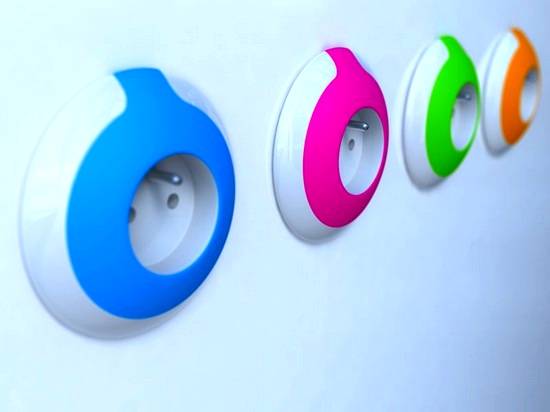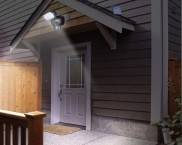Why does the energy saving light blink when the switch is off?
HaveThe design of energy-saving lamps has little in common with conventional incandescent lamps. Technical solutions that are used in economical lamps make it possible not only to reduce energy consumption and the ability to change the spectrum, but also endow them with high sensitivity to electromagnetic fields. For example, why does an energy saving light bulb blink? with the switch off or why does it continue to glow uniformly for some time after disconnecting from the mains? Basic knowledge of the basics of electrical engineering is enough to answer these questions.
The content of the article
Energy saving light bulbs: types and varieties
There are two types of energy saving lamps - mercury and LED. They differ in the principle of the device, but they have a common quality - the ability to operate in a wide range of current values, from a few milliamperes to several tens of amperes. Both types of luminaires are distinguished by their particular brightness and low energy consumption.
The general tendency to abandon the costly "Ilyich's bulbs" leads to the fact that they are replaced by energy-saving ones. These devices can serve several times longer, provided they are used correctly, which differs from the mode of a conventional incandescent lamp. A tungsten coil lamp emits light from a hot metal, while an energy-saving lamp emits metal fumes or semiconductors.
The principle of operation of a fluorescent lamp
Energy-saving lamps, the principle of which is based on the ability of mercury vapor to emit light, have been known for over a century. Modern energy-saving lamps are an improved version of a fluorescent lamp that has been widely used in production since Soviet times.
The principle of operation of fluorescent lamps is as follows:
- when the power is connected, the electric current passes through the electronic ballast, where it is converted and fed to the electrodes;
- tungsten electrodes coated with a mixture of metal oxides ionize mercury vapor inside the glass bulb, causing them to emit an ultraviolet glow;
- the phosphor, which covers the walls of the flask from the inside, converts the ultraviolet spectrum to any other, it depends on the chemical composition of the phosphor.
The main element of the lamp is the electronic ballast, which ensures the correct operation of the device. Its task is to bring the current to the specified characteristics, as well as to heat the electrodes (in expensive lamps), thereby increasing the lamp life.
The principle of operation of LED lamps
LED lamp have a similar design - base, current converter and luminous elements. Used as light emitters LEDs - analog semiconductor elements that begin to glow under the influence of current.
Unlike fluorescent lamps, LEDs are absolutely safe from an environmental point of view. In the production of the former, mercury vapor and metal oxides are used, which are part of the phosphor. These substances pose a serious danger to humans through direct contact with them. Therefore, energy-saving lamps cannot simply be thrown into the trash, they require professional disposal.
An LED is a microscopic crystal, chemically neutral, enclosed in a transparent case, and also connected to metal contacts. By themselves, diodes are completely safe, they do not contain harmful impurities or hazardous components. When connected to the network, the crystals begin to glow very brightly, while, due to their low mass, the heat they release is almost imperceptible, the maximum temperature to which the diode can heat up outside is 60 degrees Celsius.
As with fluorescent lamps, the current converter is a rectifier. LEDs can also begin to glow at a very low current strength, so sometimes special capacitors are placed on them, which ensure that the lamp turns on only after the current reaches a certain threshold value. Very often, the reason why the energy-saving or LED light blinks when the switch is off is precisely the malfunction in the electronic ballast.
Why does the lamp blink
Lighting fixtures are just a part of the entire electrical circuit that is used in a home. It seems that each object is autonomous, and has only two positions - on or off. In case of energy saving lamps this is not true. These devices are so sensitive that they can react to the slightest change in the network parameters, even if the circuit is open.
The main reason why the energy-saving light blinks when the switch is off is that the voltage is still supplied to it. There are several explanations for this phenomenon.
Using an illuminated rocker switch
This device does not open the circuit when the button is pressed, because the LED is connected to the network. In this case, the small amount of energy that goes to the backlight simultaneously charges the lamp capacitor. When sufficient charge accumulates to start, the lamp flashes for a moment and then goes out. The capacitor is again discharged, current is applied to it again, a start occurs, and so on. In this way, hundreds of starts can occur overnight alone, which seriously reduces the life of the bulb.
Network connection error
During the installation, the electrician could confuse the phase wire with zero. This error is detected using an ammeter. With this "pathology" the lamp burns with a weak uniform light.
Manufacturing defects
The main and most expensive part of the lamp is its electronic filling, on which the service life of the product depends. A simple answer to the question: why are energy-saving bulbs blinking when turned off switch, is that the manufacturer simply saved on capacitors or other elements, so flickering may occur.
How to extend lamp life
Energy saving lamps in the off position may flash at different rates or emit a subtle glow. In any case, even low-intensity light means that the lamps are experiencing operational stress, which means they may use up their resource ahead of time. The most annoying thing is that flashing lamps wears them out the fastest.
If the lamp has a factory defect, it will not be possible to extend its service life, and it is very difficult to recognize a poor-quality device. In all other cases, the problem can be fixed.
How to avoid flickering - simple tricks
To minimize risks, the following guidelines must be followed:
- buy lamps from well-known manufacturers who can guarantee quality;
- carry out electrical work carefully, involving specialists;
- do not use backlit switches with energy-saving lamps.
Video: Eliminating the Cause of the Blinking Energy Saving Lamp

























